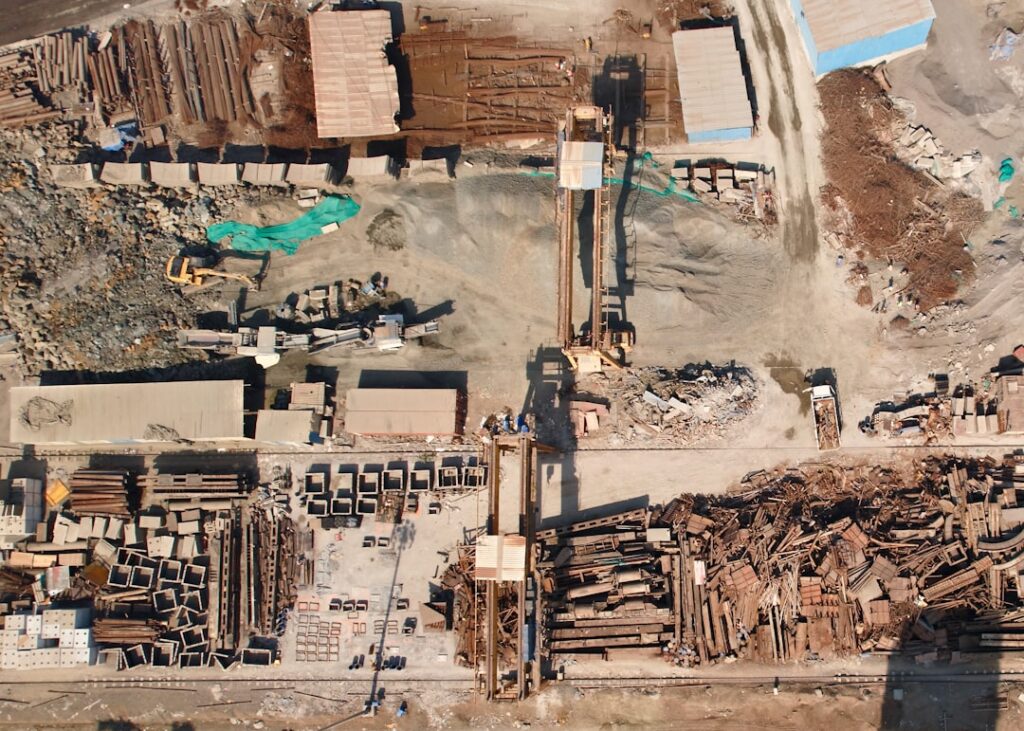Lumber is a versatile material used in a wide range of construction and woodworking projects. There are several different types of lumber, each with its own unique characteristics and uses. Softwood lumber comes from coniferous trees, such as pine, cedar, and spruce. It is known for its affordability, ease of use, and availability. Softwood lumber is commonly used in construction, framing, and outdoor projects. Hardwood lumber, on the other hand, comes from deciduous trees, such as oak, maple, and cherry. It is known for its durability, strength, and aesthetic appeal. Hardwood lumber is often used in furniture making, cabinetry, and decorative woodworking projects.
In addition to softwood and hardwood lumber, there are also engineered wood products, such as plywood, particleboard, and MDF (medium-density fiberboard). These products are made by binding together wood fibers or veneers with adhesives to create strong and versatile building materials. Engineered wood products are often used in cabinetry, furniture making, and structural applications. Understanding the different types of lumber is essential for choosing the right material for your specific project. Whether you are building a deck, crafting a piece of furniture, or framing a house, selecting the appropriate type of lumber will ensure the success and longevity of your project.
Key Takeaways
- There are two main types of lumber: hardwood and softwood, each with their own unique characteristics and uses.
- Hardwood lumber comes from deciduous trees and is known for its durability and strength, while softwood lumber comes from coniferous trees and is often used for construction and woodworking.
- Sustainable and eco-friendly lumber options, such as reclaimed wood and FSC-certified lumber, are becoming increasingly popular for environmentally conscious consumers.
- When selecting lumber for indoor projects, consider factors such as moisture resistance, stability, and appearance to ensure the best results.
- For outdoor projects, it’s important to choose lumber that is resistant to rot, decay, and insect damage, such as pressure-treated wood or naturally durable hardwoods like cedar or redwood.
Comparing Hardwood and Softwood Options
When it comes to choosing between hardwood and softwood lumber, there are several factors to consider. Hardwood lumber is known for its strength, durability, and aesthetic appeal. It is often used in high-end furniture making, cabinetry, and decorative woodworking projects. Hardwood lumber comes in a variety of species, each with its own unique grain patterns and color variations. Oak, maple, cherry, and walnut are popular choices for hardwood lumber due to their beauty and versatility. Softwood lumber, on the other hand, is more readily available and affordable than hardwood lumber. It is commonly used in construction, framing, and outdoor projects. Pine, cedar, and spruce are popular choices for softwood lumber due to their ease of use and natural resistance to decay.
When comparing hardwood and softwood options, it is important to consider the specific requirements of your project. If you are building a piece of furniture or cabinetry, hardwood lumber may be the best choice due to its strength and aesthetic appeal. However, if you are constructing a deck or framing a house, softwood lumber may be more suitable due to its affordability and availability. Ultimately, the decision between hardwood and softwood lumber will depend on your project’s specific needs and budget.
Exploring Sustainable and Eco-Friendly Lumber Choices
In recent years, there has been a growing emphasis on sustainable and eco-friendly lumber choices. Sustainable lumber is harvested from responsibly managed forests that prioritize environmental conservation and long-term forest health. Eco-friendly lumber options include FSC (Forest Stewardship Council) certified wood, reclaimed wood, and bamboo. FSC certified wood is sourced from forests that are managed in accordance with strict environmental, social, and economic standards. Reclaimed wood is salvaged from old buildings, barns, and other structures, giving new life to existing materials and reducing the demand for new timber. Bamboo is a rapidly renewable resource that can be harvested in as little as three to five years, making it an environmentally friendly alternative to traditional hardwoods.
Exploring sustainable and eco-friendly lumber choices is important for reducing the environmental impact of construction and woodworking projects. By choosing responsibly sourced materials, you can help protect natural habitats, conserve biodiversity, and mitigate climate change. Additionally, sustainable lumber options often have unique characteristics and aesthetic appeal that can add value to your projects. Whether you are building a new piece of furniture or renovating your home, considering sustainable and eco-friendly lumber choices is a positive step towards environmental stewardship.
Selecting the Best Lumber for Indoor Projects
| Lumber Type | Strength | Cost | Appearance |
|---|---|---|---|
| Softwood (Pine) | Medium | Low | Knotty |
| Hardwood (Oak) | High | High | Smooth |
| Plywood | Medium | Medium | Varies |
When selecting lumber for indoor projects, it is important to consider factors such as stability, appearance, and workability. Hardwood lumber is often the preferred choice for indoor projects due to its strength and aesthetic appeal. Oak, maple, cherry, and walnut are popular choices for furniture making, cabinetry, and decorative woodworking projects. These hardwood species offer beautiful grain patterns and color variations that can enhance the visual appeal of your indoor spaces. Softwood lumber can also be used for indoor projects, particularly in construction and framing applications. Pine, cedar, and spruce are commonly used for interior trim, molding, and paneling due to their affordability and ease of use.
In addition to considering the type of lumber, it is important to select boards that are stable and free from defects. Warping, twisting, and cupping can occur in improperly dried or stored lumber, leading to problems during assembly and use. Choosing kiln-dried lumber with straight grain patterns will help ensure the stability and longevity of your indoor projects. Furthermore, selecting boards with consistent color and grain patterns will enhance the overall appearance of your finished pieces. By carefully selecting the best lumber for indoor projects, you can create beautiful and durable furnishings that will stand the test of time.
Choosing the Right Lumber for Outdoor Projects
Outdoor projects require lumber that can withstand the elements and resist decay. Cedar and redwood are popular choices for outdoor projects due to their natural resistance to rot and insect damage. These softwood species are often used in decking, fencing, and outdoor furniture due to their durability and weather resistance. Pressure-treated lumber is another common choice for outdoor projects as it has been chemically treated to resist decay and insect infestation. Pressure-treated lumber is often used in structural applications such as deck framing and outdoor construction.
In addition to selecting rot-resistant lumber, it is important to consider the finishing and maintenance requirements of outdoor projects. Applying a protective finish or stain can help prolong the life of outdoor wood by shielding it from moisture and UV exposure. Regular maintenance such as cleaning, sanding, and reapplying finish will help preserve the appearance and integrity of outdoor wood over time. By choosing the right lumber for outdoor projects and implementing proper finishing and maintenance practices, you can create beautiful and long-lasting outdoor spaces that will be enjoyed for years to come.
Tips for Staining and Finishing Your Lumber

Staining and finishing your lumber is an important step in enhancing its appearance and protecting it from wear and tear. Before applying any finish or stain, it is essential to properly prepare the wood surface by sanding it smooth and removing any dust or debris. Choosing the right type of finish or stain will depend on the desired look and level of protection for your project. Oil-based finishes offer a rich color and durable protection but require longer drying times between coats. Water-based finishes dry quickly and emit fewer fumes but may not provide as much depth of color as oil-based finishes.
When staining your lumber, it is important to test the stain on a small inconspicuous area to ensure it achieves the desired color before applying it to the entire surface. Applying multiple thin coats of stain will allow you to build up the color gradually while avoiding blotching or uneven absorption. After staining, applying a clear topcoat will provide additional protection against moisture, UV rays, and abrasion. Whether you are finishing a piece of furniture or staining a deck, following these tips for staining and finishing your lumber will help you achieve professional-looking results that will stand up to daily use.
Expert Advice on Maintaining and Caring for Your Lumber
Proper maintenance and care are essential for preserving the beauty and integrity of your lumber over time. Regular cleaning with a mild detergent or wood cleaner will help remove dirt, grime, and mildew from the surface of your wood projects. Avoid using harsh chemicals or abrasive cleaners that can damage the finish or wood fibers. Sanding any rough spots or scratches with fine-grit sandpaper will help restore the smoothness and luster of your wood surfaces.
In addition to regular cleaning and maintenance, it is important to protect your wood projects from excessive moisture and UV exposure. Applying a fresh coat of finish or stain every few years will help maintain the appearance and protection of your wood surfaces. For outdoor projects such as decks or fences, inspecting for signs of rot or insect damage annually will allow you to address any issues before they become more serious. By following expert advice on maintaining and caring for your lumber, you can ensure that your wood projects remain beautiful and functional for years to come.
In conclusion, understanding the different types of lumber is essential for choosing the right material for your specific project. Whether you are working on an indoor or outdoor project, selecting the appropriate type of lumber will ensure the success and longevity of your project. By exploring sustainable and eco-friendly lumber choices, you can reduce the environmental impact of construction and woodworking projects while adding unique characteristics to your projects. Selecting the best lumber for indoor or outdoor projects requires careful consideration of stability, appearance, durability, and maintenance requirements. Finally, following expert advice on staining, finishing, maintaining, and caring for your lumber will help you achieve professional-looking results that will stand up to daily use while preserving the beauty of your wood projects over time.
If you’re interested in learning more about the lumber industry, you might want to check out this article on Art, Candy, and Coin. It provides valuable insights into the current state of the lumber market and how it is impacting businesses like Keim Lumber. This article could offer a deeper understanding of the challenges and opportunities facing the industry.
FAQs
What is Keim Lumber?
Keim Lumber is a family-owned and operated business that has been providing quality lumber and building materials since 1911. They are located in Charm, Ohio and are known for their wide selection of products and exceptional customer service.
What products does Keim Lumber offer?
Keim Lumber offers a wide range of products including lumber, hardware, tools, flooring, doors, windows, cabinets, and more. They also have a custom millwork department that can create custom moldings, trim, and other wood products.
Does Keim Lumber offer delivery services?
Yes, Keim Lumber offers delivery services for their products. They have a fleet of trucks that can deliver materials to customers within a certain radius of their location in Charm, Ohio.
Does Keim Lumber have a showroom or retail store?
Yes, Keim Lumber has a large showroom and retail store where customers can browse their selection of products and speak with knowledgeable staff members. They also have a website where customers can view their products and place orders online.
Does Keim Lumber offer custom woodworking services?
Yes, Keim Lumber has a custom millwork department that can create custom wood products to meet the specific needs of their customers. This includes custom moldings, trim, and other wood products.


